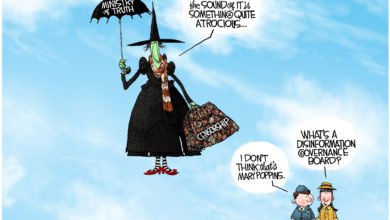Bidenomics: Food Banks Are Inundated With Requests For Aid As Inflation Bites

Food banks across the U.S. are reporting a massive uptick in demand as Americans continue to struggle with inflation.
Several food banks told the Daily Caller News Foundation that the volume of requests for food has risen to levels even higher than during the COVID-19 pandemic, as more people struggle to afford their daily expenses. Many food banks credited the increase in demand for food to inflation, which has cut into real wages and made purchasing everyday goods, including groceries, much more expensive.
“I can say without any fear of being wrong that this is the most amount of people that we’ve ever seen, including the COVID pandemic,” Jerry Brown, director of media relations at St. Mary’s Food Bank Alliance, which operates in the majority of Arizona, told the DCNF. “Inflation has really brought so many more folks to the edge and needing help.”
St. Mary’s, whose main locations are in Phoenix and Surprise but has around 800 agency partners across the state, had around 1,600 families come to its food banks on Thursday, surpassing the roughly 1,100 on average seen during the COVID-19 pandemic, and the 700 on average before 2020.
Brown also pointed out that an increasing number of seniors are seeking assistance as their social security payments have failed to keep up with the rapid rise in inflation.
Inflation peaked in June 2022 at 9.1% year-over-year, ultimately decelerating to 3.0% for the year in June before picking back up again in July and August. Due to inflation, the price of food in particular has risen 16.9% compared to two years ago, according to the Federal Reserve Bank of St. Louis (FRED).
“We’re calling it a quiet crisis,” Les Sinclair, communications and PR manager for the Blue Ridge Area Food Bank (BRAFB), told the DCNF. “We know that the lines don’t make the headlines like they did during the pandemic. So even though, while those lines are visible, the need is still there, and certainly at higher than pre-pandemic levels. So it’s something that is affecting everyday folks across the country — hardworking folks that have jobs. And you think about the seniors who have paid into Social Security, and they’re just not getting enough to get by.”
BRAFB, which serves 25 counties and 8 cities in a primarily rural area around the Blue Ridge Mountains, reports that the number of people served on average per month was 127,500 for fiscal year 2023, which ended in June, compared to 109,500 people who were served during fiscal year 2022, according to the BRAFB 2023 annual report.
“So what we’re seeing is that inflation is really taking a toll on people,” Sinclair told the DCNF. “The reduction in SNAP benefits and the reorganization or the need to reauthorize for Medicare is also affecting people as well. And just simply the wages aren’t rising as high as fast as inflation is.”
Real wages have significantly degraded following the high inflation of the past few years, with median weekly real earnings for both wage and salary workers falling 7.1% in the second quarter of 2023 from their all-time peak during the second quarter of 2020, according to FRED.
Tomorrow starts #HungerActionMonth 🧡
Your power, voice, actions, and commitment will ensure nobody has to make an impossible choice between food and other necessities like medicine, utilities, or childcare.
Learn more: https://t.co/oqqGWj4ARB
📸: Volunteers @FeedingSanDiego pic.twitter.com/Hg1CAXR6VN
— Feeding America (@FeedingAmerica) August 31, 2023
“Donations to the Houston Food Bank have decreased since the pandemic, yet the need for assistance continues to rise,” Amy Ragan, chief development officer of the Houston Food Bank, told the DCNF. “One in eight residents in our 18-county service area experience food insecurity, and we are working harder than ever to assist with food distribution and other Houston Food Bank programs.”
From June to August, the Houston Food Bank saw a 19% increase in food it distributed, handing out 10,245,081 pounds of food for the month of August, according to data reviewed by the DCNF. The number of individuals receiving food increased from 260,725 to 311,148 in that same time period.
The government’s Supplemental Poverty Measure, released in September, found that from 2021 to 2022, poverty for children rose from 5.2% to 12.4%, and for the general population from 7.8% to 12.4%. Median household income adjusted for inflation also fell from $76,330 to $74,580 in that same time period.
The Los Angeles Regional Food Bank has also seen increasing demand for the year, distributing about 34% more food in August compared to January, while the number of people served has increased 13% from January until June, according to data given to the DCNF.
“Compared to what I’ve heard from others, we’re treading water, but I would say we’re doing okay; we can always use more, but I think we’re not in such a challenging situation than perhaps some of our colleagues,” Michael Flood, CEO of the Los Angeles Regional Food Bank, told the DCNF. “Then some of the pandemic-era programs have ended too, which, from what we can tell, has led to some increase in the demand for food assistance starting this past spring.”
Content created by The Daily Caller News Foundation is available without charge to any eligible news publisher that can provide a large audience. For licensing opportunities of our original content, please contact licensing@dailycallernewsfoundation.org





What is wrong, Are ILLEGALS taking your place? You voted people in to make it a sanctuary city. You voted in dumecrats because you wanted something for free.